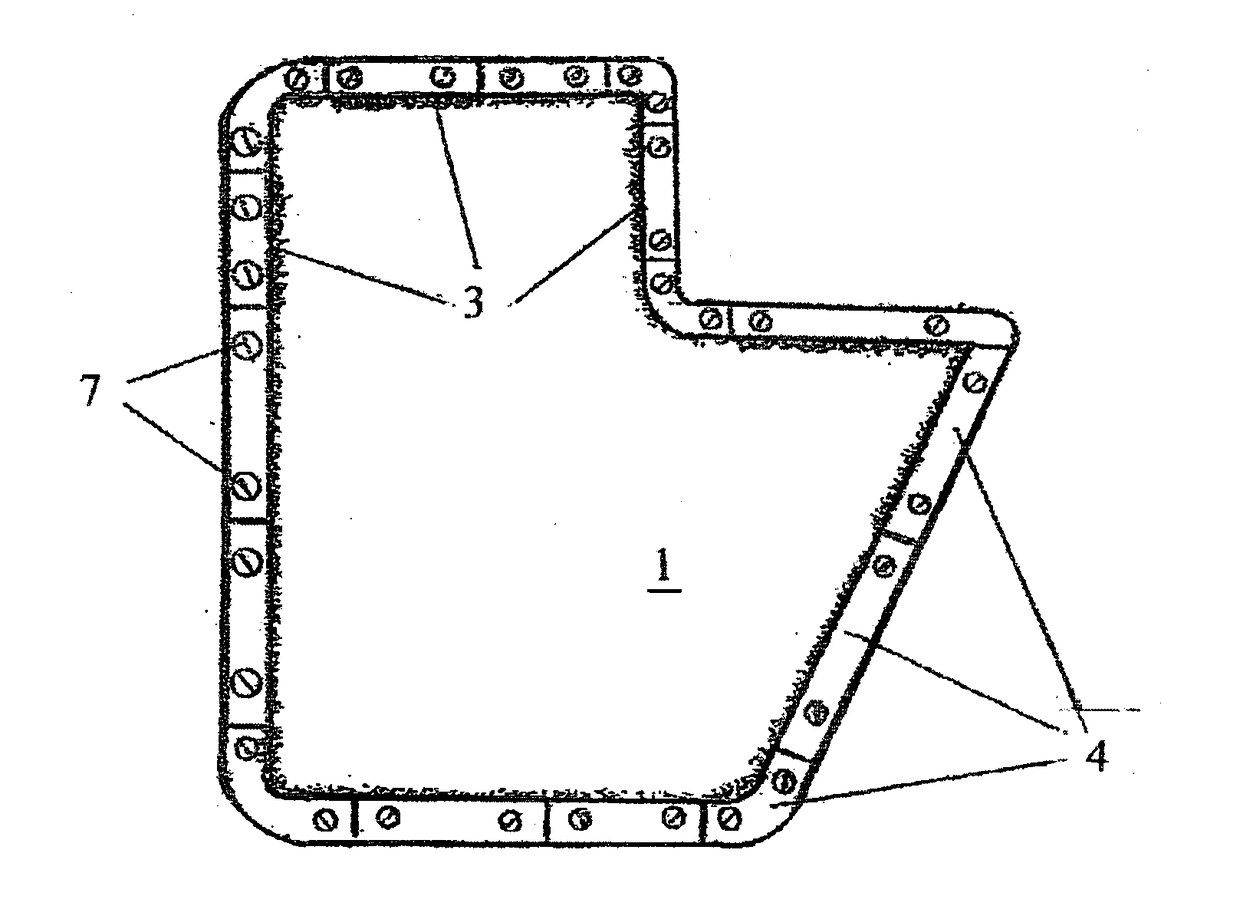Molding Tools and Method With Grip-Enhancing Structure
a technology of gripping structure and molding tools, which is applied in the field of molding tools and a method, can solve the problems of reducing the yield of the production process and increasing waste, and achieve the effects of increasing the gripping or holding of the edge portion, reducing or preventing the pullback or retraction of the cut edge, and reducing or preventing the pullback or retraction of the edg
- Summary
- Abstract
- Description
- Claims
- Application Information
AI Technical Summary
Benefits of technology
Problems solved by technology
Method used
Image
Examples
Embodiment Construction
[0023]The drawings merely schematically illustrate a few components and only a small portion of an overall complete molding apparatus according to several different embodiments of the invention. Particularly, the drawings illustrate only portions of upper and lower mold tools. This limited schematic illustration is sufficient to enable a person of ordinary skill in the art to practice the invention, because other non-illustrated components and portions of such a molding apparatus are conventionally known or understood. For example, a person of ordinary skill readily understands that the molding apparatus includes additional components and devices that are not, and do not need to be, illustrated; such as heating devices, cooling devices, material carrying frames, material transport conveyors, actuators, controls, machine frames or supports, etc. Such additional devices and components can be embodied, configured and arranged in any conventionally known or understood manner. For exampl...
PUM
| Property | Measurement | Unit |
|---|---|---|
| molding | aaaaa | aaaaa |
| surface roughness | aaaaa | aaaaa |
| friction coefficient | aaaaa | aaaaa |
Abstract
Description
Claims
Application Information
 Login to View More
Login to View More - R&D
- Intellectual Property
- Life Sciences
- Materials
- Tech Scout
- Unparalleled Data Quality
- Higher Quality Content
- 60% Fewer Hallucinations
Browse by: Latest US Patents, China's latest patents, Technical Efficacy Thesaurus, Application Domain, Technology Topic, Popular Technical Reports.
© 2025 PatSnap. All rights reserved.Legal|Privacy policy|Modern Slavery Act Transparency Statement|Sitemap|About US| Contact US: help@patsnap.com



